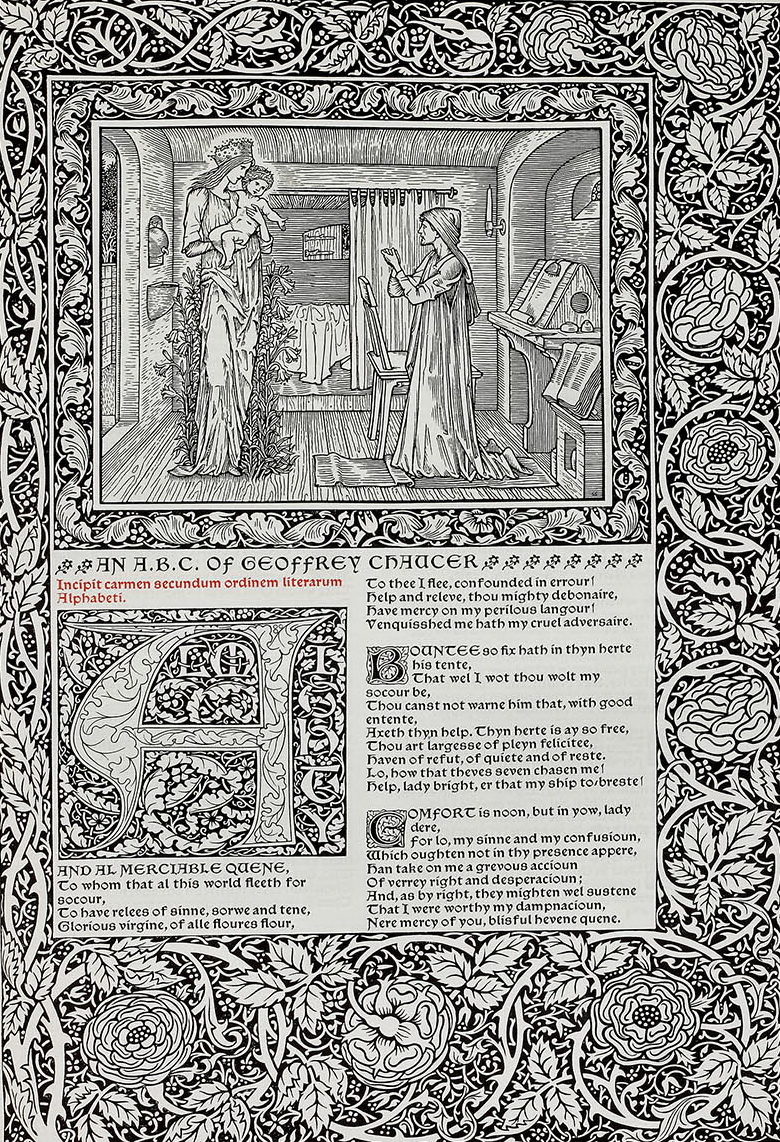The Works of Geoffrey Chaucer
The Works of Geoffrey Chaucer
It may be that the stylistic devices are from the past, are not well-suited to the present and not suited at all to the future; the recollection that a book can be an entire work of art when the use of artistic principles when designing its outward appearance correspond to the literary content was the message that many saw, took on board and developed further.
Hans-Christian Kirsch, William Morris – ein Mann gegen die Zeit, 1983
The volume The Works of Geoffrey Chaucer from the year 1896 is the main work printed by Kelmscott Press. William Morris saw the English poet and writer Chaucer (circa 1340-1400) as a role model for his own literary aspirations. He engaged the book trader and author Frederick Startridge Ellis (1830-1901) as editor and Edward Burne-Jones (1833-1898), an artist from the circle of Pre-Raphaelites, to do the woodcut illustrations. Morris himself designed a new font called Chaucer Type for the text, a smaller version of his Troy Type, which he used for the titles. He also drew the designs for the borders and initials as well as providing designs for the covers, which were produced in the book-binding workshop of Thomas Cobden-Sanderson (1840-1922).
Work on this volume, from initial planning to final completion of the hand-pressed print, took almost five years. The first information referring to this can be found in the third advertising announcement issued by Kelmscott Press in December 1892. There was a great deal of interest in the book and nearly all copies of the print run were already ordered in advance by December 1894, 18 months before publication. Kelmscott Press used expert craftsmanship and a keen feeling for design in the spirit of the Arts and Crafts Movement to create this and other books that were entire works of art in themselves. Morris is seen to be a reviver of book art and his works had a great influence on its further development. His ideas on book art spread from England to Germany, Europe and the USA, where private presses were set up which then also influenced the commercial book trade.

